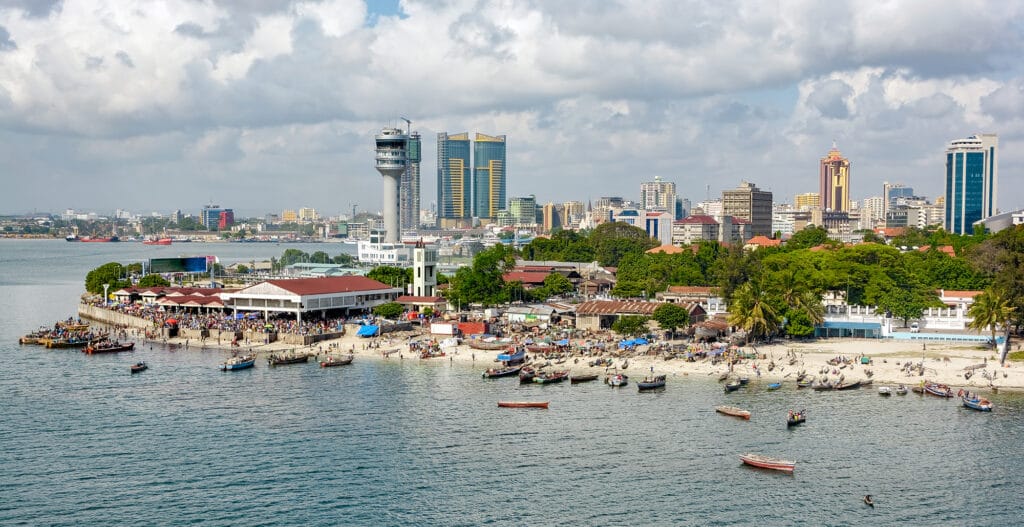Tanzania’s economy in 2025 continues to grow, driven by key sectors such as agriculture, mining, tourism, manufacturing, and energy. As one of Africa’s fastest-growing economies, Tanzania is implementing policies to boost industrialization, attract foreign investment, and modernize infrastructure. This article explores the major sectors driving Tanzania’s economy in 2025.
Agriculture: The Backbone of Tanzania’s Economy
Agriculture remains Tanzania’s largest sector, contributing about 25% of GDP and employing over 65% of the population.
Major crops include coffee, tea, cashew nuts, maize, rice, and horticultural products.
The government is promoting agricultural mechanization and irrigation projects to reduce dependence on rain-fed farming.
The Southern Agricultural Growth Corridor of Tanzania (SAGCOT) continues to attract investment, boosting productivity.
Challenges in the Agricultural Sector
Climate change is affecting rainfall patterns, leading to unpredictable yields.
Limited access to modern farming techniques and capital for small-scale farmers.
Global market fluctuations affecting prices of cash crops like coffee and tea.
Mining and Natural Resources: A Major Revenue Source
Tanzania is one of Africa’s largest producers of gold, diamonds, and tanzanite.
The government has introduced new policies to regulate mining operations and increase local benefits from mineral exports.
Critical minerals like graphite, lithium, and nickel, essential for electric vehicle batteries, are attracting international interest.
Foreign Direct Investment (FDI) in mining continues to rise, particularly from China and the UAE.
Challenges in the Mining Sector
Illegal mining and smuggling reduce government revenue.
Environmental concerns, including land degradation and deforestation.
Global commodity price fluctuations impact revenue generation.
Tourism: A Key Foreign Exchange Earner
Tanzania remains one of Africa’s top tourist destinations, thanks to attractions like Serengeti National Park, Mount Kilimanjaro, and Zanzibar’s beaches.
Ecotourism and wildlife conservation are becoming more popular, with increased focus on sustainable tourism.
The government is investing in airport expansions and better roads to boost accessibility.
Digital marketing strategies are increasing Tanzania’s visibility in international markets.
Challenges in the Tourism Sector
Global economic downturns impact international travel demand.
Climate change affects wildlife migration patterns in national parks.
Competition from neighboring countries like Kenya and South Africa.
Manufacturing and Industrialization: The Road to Self-Sufficiency
Tanzania is investing in industrialization to reduce dependence on imports.
The Dar es Salaam Industrial Zone is expanding, attracting investments in textiles, cement, and food processing.
Growth in local pharmaceutical production is reducing reliance on imported medicine.
The government’s “Buy Tanzanian, Build Tanzania” policy encourages local production.
Challenges in the Manufacturing Sector
High production costs due to electricity and transportation issues.
Limited skilled labor for specialized industries.
Competition from imported goods affects local industries.
Energy and Infrastructure: Powering Tanzania’s Growth
The Julius Nyerere Hydropower Project (JNHPP) is expected to significantly boost electricity supply in 2025.
Tanzania is expanding its natural gas sector, exporting to regional markets.
Investments in solar and wind energy projects are growing as part of the country’s renewable energy strategy.
The government is improving road and railway networks, including the Standard Gauge Railway (SGR) to connect Tanzania with East African neighbors.
Challenges in the Energy Sector
Delays in major infrastructure projects due to funding gaps.
Reliance on hydropower, which is vulnerable to drought conditions.
Need for more private sector involvement in energy development.
Tanzania’s economic growth in 2025 is being driven by agriculture, mining, tourism, manufacturing, and energy. While the country faces challenges such as climate change, infrastructure limitations, and global market fluctuations, strategic investments and government policies are positioning Tanzania for a more sustainable and prosperous future.


